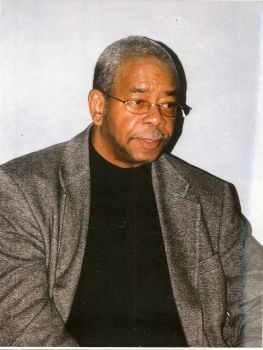Maxwell Curtis Stanford, Jr., known since 1970 as Muhammad Ahmad, is a civil rights activist and was a founder of the Revolutionary Action Movement (RAM), a black power organization active during the 1960s. Born on July 31, 1941 in Philadelphia, Pennsylvania, he graduated from West Philadelphia High School and attended Central State College in Wilberforce, Ohio from 1960 to 1962. Stanford left college after founding RAM in the summer of 1962.
RAM was a black nationalist student group with a philosophy inspired by the self-defense doctrines of former National Association for the Advancement of Colored People (NAACP) leader Robert F. Williams. Williams, a former head of the Monroe, North Carolina NAACP, espoused fighting the Ku Klux Klan directly, “meeting violence with violence.” Inspired by Williams’s actions, a group of college students in Wilberforce created an organization they dubbed “Challenge.” The group’s leader, Donald Freeman, hoped to create a force with the nationalist sentiment of the Nation of Islam and the direct tactics of the Student Nonviolent Coordinating Committee (SNCC). In the spring of 1962, members elected to dissolve Challenge, and Freeman, Stanford, and Wanda Marshall established RAM.
Marshall and Stanford met Malcolm X in Harlem in November 1962, and Malcolm would join the organization before embarking on his trip to Mecca, Saudi Arabia in 1964. RAM’s philosophy combined elements of black nationalism, Marxism, and Third World internationalism. With RAM, Stanford began promoting selective patronage to force businesses to employ more black workers. In 1963, Stanford was arrested while part of a group protesting the construction of the Strawberry Mansion Junior High School in Philadelphia. RAM charged that black construction workers were not allowed jobs on the project despite its location in an African American community.
Between 1964 and 1968, RAM’s attempt to politicize black Philadelphia drew the attention of the FBI. In 1966 Stanford and fifteen other RAM members were arrested in New York on charges of conspiring to assassinate NAACP leader Roy Wilkins and the Urban League’s Whitney Young. Stanford was acquitted on the charges and he promptly returned to Philadelphia to establish the Black Guard, a youth and self-defense wing of RAM. In 1967 Philadelphia police and the FBI began a campaign of surveillance of RAM. Claiming an informant had told them the group intended to start a riot, police arrested Stanford on July 26, 1967, and 35 more RAM activists over the next month. In 1968, Stanford dissolved RAM, and by 1969 its members joined other organizations.
In 1970, Stanford converted to Islam and changed his name to Muhammad Ahmad. He returned to college, earned a Bachelor of Arts degree from the University of Massachusetts in 1976, and a Master of Arts from Atlanta University in Georgia in 1986. His Master’s thesis was “The Revolutionary Action Movement (RAM): A Case Study of an Urban Revolutionary Movement in Western Capitalist Society.” Ahmad gained his Ph.D. from Union Institute and University in 1992, with a dissertation titled “The Black Liberation Movement: Then and Now, Case Studies of the Class Composition and Attitudes of a Social Movement in a Western Capitalist Society.” Stanford currently teaches in the department of African American Studies at Temple University in Philadelphia.

